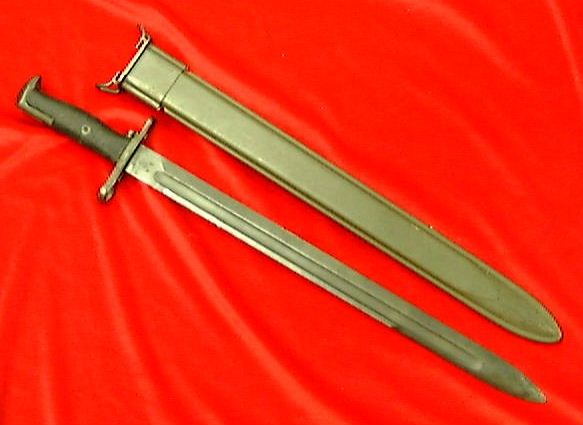The US entered the war still issuing the WWI vintage M1905 Bayonet with a 16-inch blade. The M1905 would fit both the '03 and M1 Garand. It was initially issued with the canvas-covered M1910 scabbard, but in 1941 the more common OD plastic M3 scabbards began being issued. WWII production M1905's have the date of manufacture stamped on them at the base of the blade. In 1942 a cut down version of the M1905 was tested using a 10-inch blade, which made it easier to use and saved critical steel as well.
In 1943 full production of the 10-inch M1 bayonet began. The scabbard was also shortened and re-designated the M7. On the M1 bayonet, the blood groove stops 3 inches from the tip of the blade. The M1 was the most widely issued American bayonet of the war. This is the bayonet to buy for reenacting.
The M3 trench knife was adopted by the Army in January 1943. It replaced the venerable M1918 Mark I trench knife leftover from WWI. Originally issued with the leather M6 scabbard, the M3 is usually found in the M8 plastic scabbard. The M3 was issued by regulation to every soldier that carried an M1 carbine, which could not be fitted with a bayonet. Many paratroopers and glidermen also "procurred" one whenever possible, as the M3 was a very popular and practical weapon.
|
